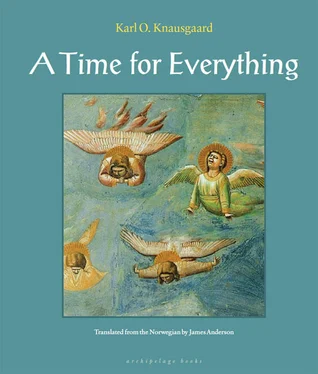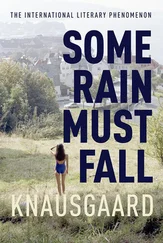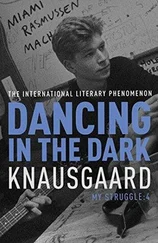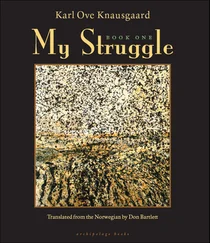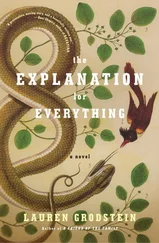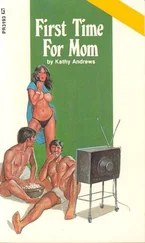He saw the world as it was. Animals tore the throats out of other animals, growling and with breasts covered in blood they ate the recently living flesh. They mated, and out of them new animals came crawling, and out of those new animals, and out of those new animals again. All of them were filled with the fear of death when they were threatened, all of them did whatever was needed to keep themselves here and live on, live on. The leaves that burgeoned from the trees each spring, the grass that crept up as soon as there was a tiny chink in a flagstone floor, just grew and grew and grew.
The earth was a living hell. Everything lived, and everything wanted to go on living. But why? It was blind, it couldn’t see itself, it just was and it wanted more.
And the dead?
The dead returned like flies.
When Bellori committed these thoughts to paper, two years had elapsed since he’d thought them, and during that time a distance must have grown up between him and the world, because in most of what he wrote from that time on, there are elements of irony and cynicism, something his earlier writings show no trace of.
Apart from what he writes about the angels. About them he employs no irony whatever. Perhaps he sees them as some kind of final hope, perhaps it’s the purity of his childhood that he doesn’t want to desecrate.
I still fall to my knees and pray to them , he writes in February 1606. After all these years I still fall on my knees to them. After all these years I can still imagine them with shining clarity. Oh, that plaintive cry! Oh, those quivering hands! Oh, those lovely faces! Shall I never see them again?
Oh, most beautiful of creatures, will I really never see you again?
He is fifty-four years old, and has traipsed about wildernesses in search of angels for eighteen years. In the eyes of his fellow townsmen he is a figure of ridicule, and perhaps in his own, too, as, pencil in hand, he stands staring at his reflection in the open wardrobe door on the other side of the room. His skin is dark and weather-beaten, his face is thin, his nose almost aquiline. His long hair and beard are dark, like the cape that hangs about his shoulders, and his whole appearance would have made a somber, almost demonic impression had it not been for the eyes, which look on himself with amusement, and the smile on his lips, which is difficult to interpret as anything other than mocking. He knows only too well how his life appears to others, he has taken great pleasure in sketching mad Bellori alone in his study, surrounded by all his equipment and paraphernalia. The wall to the left of the mirror is covered in shelves, and among the many objects on them can easily be spotted a skull without a jawbone, a stuffed eagle, a grimacing Pan head made of alabaster, three ostrich eggs, some fossils, several corals, shells, stones, and minerals in marked cases ( mariana, mineralia, metalla, sulphura, conchilliatav , it says on them), a miniature globe, a snakeskin, and a metal helmet; on the table behind him, just visible in the mirror, can be glimpsed an array of retorts and test tubes, while on the right of the wardrobe is a stuffed lynx with one paw raised, its head turned to the side and its gaze resting on the viewer.
The drawing is dated February 2, 1606, and it’s the only known picture of Bellori in existence. Interestingly enough there is a drawing of angels dated the same month among his posthumous manuscripts, in which the face of one, dimly illuminated by torchlight, bears a strong resemblance to Bellori’s. Whether he has drawn himself like an angel, or an angel like himself, is something we will never know. One of the most remarkable things about Antinous Bellori’s life is that we only have his word for it. Certainly his name figures in the church register of 1551, and then again in the rolls of the universities of Naples, Bologna, and Montpellier, where he studied, but always merely as a name among other names. In this, Bellori is reminiscent of one of his great contemporaries, William Shakespeare, who also left no traces other than those he created himself. And just as with Shakespeare, there are those who have questioned whether Bellori even existed at all. In the book The World That Never Was (1957), the two Oxford researchers Hampton and White launched the theory that Bellori is actually fictional, the posthumous papers a kind of novel. In the same way that Marlowe is supposed to have borrowed an insignificant actor’s name as a pseudonym when writing plays after his feigned death, Hampton and White believed that someone had used Bellori’s name to create a man in whose person the old and the new could meet. Thus the encyclopedic character of the manuscript, thus the smooth transitions between this world and the text, life and nonlife, thus Bellori’s constantly shifting character throughout the manuscript.
The merging of Bellori’s face with that of the angel is, according to Hampton and White, one of many hints to the reader that the story is stage managed. Their argument is compelling, not least because of the context in which they read the manuscript, namely, the remarkable early seventeenth-century fascination for simulacra and imitations in all conceivable forms and variants. The courts of minor middle European princes were at that time awash with automatons and illusion-creating machinery, everything from mechanical ducks and self-playing organs to models of people that could move their eyes, turn their heads, and strut a few paces across the floor; artists perfected the trompe l’œil technique and painted such realistic skies on church ceilings that birds were said to have flown up into them; dramatists wrote plays within plays and comedies in which identities merged incessantly.
However, in 1962 two discoveries were made that immediately silenced Hampton and White’s speculation that Bellori was a figment, and overnight turned The World That Never Was into what it had claimed Bellori’s manuscript was: a historical curiosity.
It was Guido Bergotti who was able to document the first contemporary reference to Bellori. During his work on the biography, he had come across some letters in the Vatican library dating from the early 1600s, and immediately become interested in them because the sender, a landowner by the name of Donati, lived just outside Ardo. He wrote regularly to his brother in the Vatican, informing him of events large and small at home — the bees that had just swarmed, and that, at the time of writing, had transformed the tree beneath the window where he sat into a black and buzzing ball; the five cows that had been found lifeless beneath a tree after a storm, presumably struck by lightning; the recurring problem of finding enough farmhands at busy times; their mother, so confused they had to lock her up at night to prevent her wandering into the forest, her heartrending cries.
One of these letters described an episode to which no one prior to Bergotti had paid much attention. He, however, sat up as he read it. During the hunting season in the autumn of 1606, an unknown man had been found in the mountains some miles from Ardo with his body torn open and his skull smashed. As no one was missing from the town, it had to be a stranger, most likely a fugitive — why else should he be so high up in the mountains? — who’d unfortunately met a predator and been torn to bits. To judge from the condition of the corpse, it must have happened sometime during the spring, Donati wrote, and began to describe the stag he felled shortly afterward, never to mention the mysterious corpse again.
Even though both the time and place of the incident fit completely with the final passage of Bellori’s manuscript, this is nothing more than a piece of circumstantial evidence, as Bergotti was the first to admit. The letter might be describing Bellori’s corpse, but it might also be the corpse of someone else.
Читать дальше
